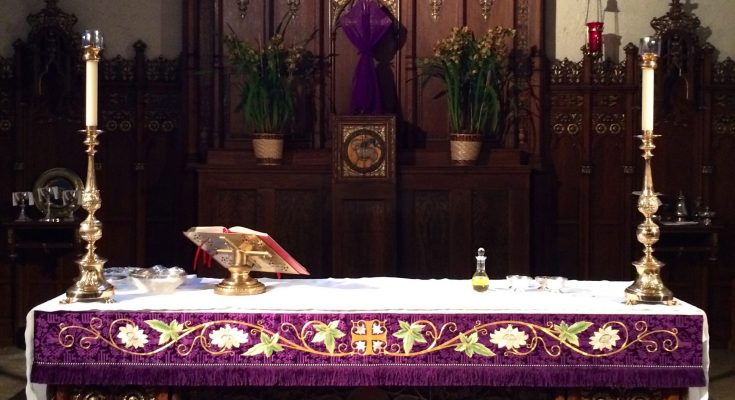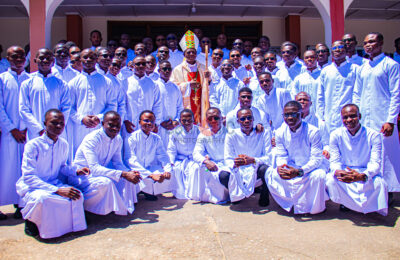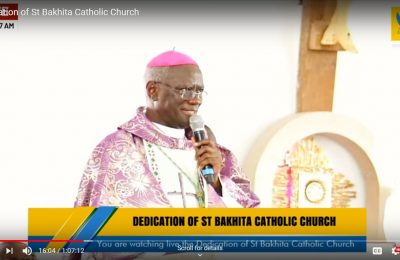Preamble
The Holy Roman Catholic Church has a unique musical spirituality for each of the Seasons. Accordingly, the Lenten Season, stands out exceptionally, especially, due to the omission of the ‘Gloria’ and the ‘Hallelujah’.
This short write up clarifies a bit, this unique Character of Lenten Musical Tradition of the Church for better appreciation by Contemporary Christ’s Faithful (All baptized Catholics).
Liturgical Silence Liturgical Silence ensures a good reflection at Mass (cf. The General Instruction of the Roman Missal, ‘GIRM’, No. 45).
In the Ordinary and other Joyful Seasons such as Christmas and Easter, the mood of the church is likely to influence choirs and their directors in the selection and performance of Songs that are of rather joyous and lively character and rhythms. In Lent, the general call to fasting and prayer has an inherent disposition to silence. We can better hear the voice of God when we remain silent.
To ensure this, musical instruments (Accompaniments ) are encouraged to be kept low in volume, and their use may be minimal. Some cultures, similarly, observe periods of silence and ban unnecessary noise making in preparation for some festivals. This does not make the Liturgy or celebration ‘dull’ as some may describe it. It rather emphasizes Solemnity and echoes the Reflective character of the Season. As the Magisterium (the teaching offfice of the church) observes and instructs, ‘Religious singing by the faithful is to be intelligently fostered so that in devotions and sacred exercises as well as in liturgical services, the voices of the faithful may be heard, in conformity with the norms and requirements of the rubrics’ (cf . Sacrosanctum Concilium No. 118)
The Gloria
The Gloria ‘is a most ancient and venerable hymn by which the Church, gathered in the Holy Spirit, glorifies and entreats God the Father and the Lamb..’ (GIRM, No. 53). This essential musical element of the Liturgy is reserved for the Easter Vigil Celebration .
Lent (like Advent ) is a Season of Expectation. The first ‘Gloria’ was sang by the Angels to express their joy at Christ’s birth (Luke 2:13-14). It is a song of Joy. We preserve it for Easter to express our Joy of Christ’s (Second)birth from the tomb, when we Commemorate His Resurrection.
The Hallelujah
The ‘Hallelujah’ is from the Hebrew Word which means “Praise the Lord”. It is an invitation to ‘Rejoice’. It is only in Lent that the Singing of the Hallelujah is discouraged (GIRM, No. 62a). In Lent we don’t rejoice as such. We rather ‘mourn’ for our Sins through Prayer, Fasting, and Almsgiving .
We rejoice at the resurrection when we hope our sins are forgiven. Then, we sing the HALLELUJAH with Confidence and with Joy.
It is worth noting that, the mood of the various Seasons determine the type of lyrics or words used in the composition of Liturgical songs. In the Lenten season, the words used are those that reflect remorse for our sins, desire for holiness, the need for reconciliation with neighbour and with God, among others. Catholic Liturgical Music Composers are encouraged to be guided by these principles in their compositions.
Similarly, Choirmasters are encouraged to pay attention to the lyrics and mood of songs selected (including songs for Offertory Collection ) for the Liturgy in the Lenten Season. Songs expressing Joy, and of more lively rhythms are more suitable for the Easter, Christmas, and Ordinary Seasons.
Conclusion
As we keep our musical instruments very low and devoid of too much noise, we are more likely to hear clearer God’s call to conversion so as to gladly Rejoice at Easter.
Written by :
Fr. Dennis Kumah Asare
Catholic Diocese of Ho, Ghana






















